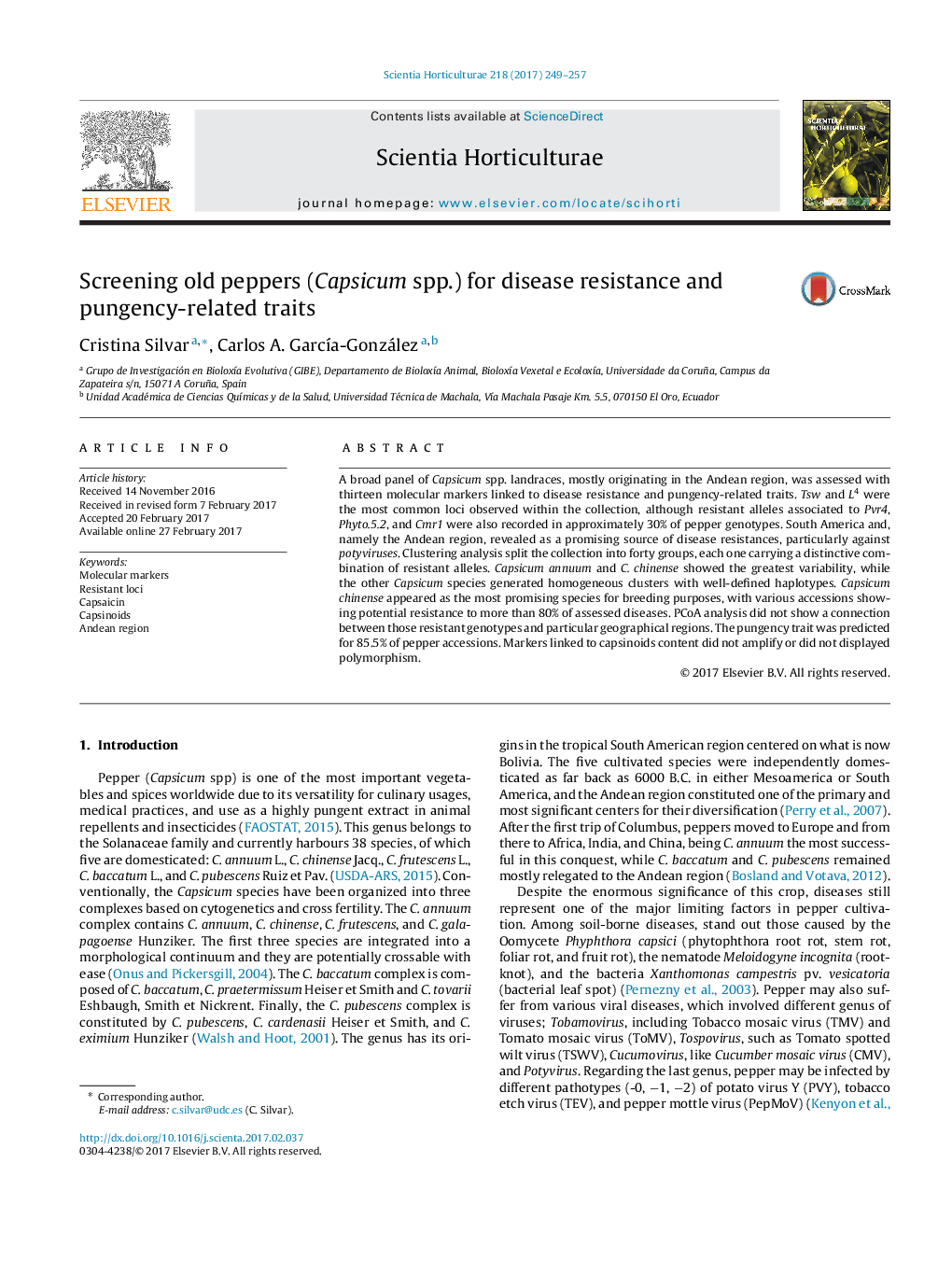| Article ID | Journal | Published Year | Pages | File Type |
|---|---|---|---|---|
| 5769551 | Scientia Horticulturae | 2017 | 9 Pages |
â¢The most common resistant alleles were Tsw, L4, Pvr4, Phyto.5.2 and Cmr1.â¢The Andean region revealed as a promising source of disease resistances.â¢Capsicum chinense was the most promising specie for disease resistance breeding purposes.â¢The pungency trait was predicted for 85.5% of Capsicum spp. accessions.
A broad panel of Capsicum spp. landraces, mostly originating in the Andean region, was assessed with thirteen molecular markers linked to disease resistance and pungency-related traits. Tsw and L4 were the most common loci observed within the collection, although resistant alleles associated to Pvr4, Phyto.5.2, and Cmr1 were also recorded in approximately 30% of pepper genotypes. South America and, namely the Andean region, revealed as a promising source of disease resistances, particularly against potyviruses. Clustering analysis split the collection into forty groups, each one carrying a distinctive combination of resistant alleles. Capsicum annuum and C. chinense showed the greatest variability, while the other Capsicum species generated homogeneous clusters with well-defined haplotypes. Capsicum chinense appeared as the most promising species for breeding purposes, with various accessions showing potential resistance to more than 80% of assessed diseases. PCoA analysis did not show a connection between those resistant genotypes and particular geographical regions. The pungency trait was predicted for 85.5% of pepper accessions. Markers linked to capsinoids content did not amplify or did not displayed polymorphism.
